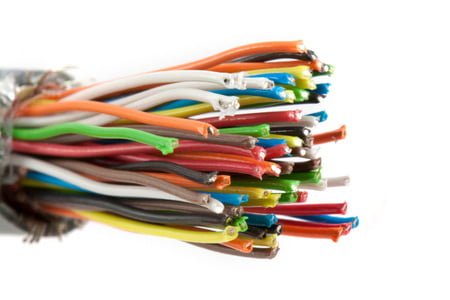Розшифровка кольорів кабелів та їх значення
Коли мова йде про кольорові коди дротяних та кабелів, Одне поширене питання полягає в тому, чи є галузевий стандарт. В той час як такі організації, як Інститут інженерів з електротехніки та електроніки (Ieee) Запропонуйте кілька рекомендацій, немає загальновизнаного стандарту. Натомість, Приватна промисловість, особливо телекомунікації, Ведіть шлях у стандартизаційних зусиллях.

Розуміння стандартів кольору кабелю
Важливо визнати, що стандарти кольорів кабелю сильно різняться в різних галузях і навіть країнах. Наприклад, Бум телекомунікацій після впровадження смартфонів у 2007 призвели до різноманітних кольорових схем, що відображають різні терміни реалізації.
Більше, Глобальні ланцюги поставок означають, що компанії отримують кабелі з різних країн, кожен зі своїми кольоровими конвенціями. Незважаючи на вказівки IEEE, Асоціація телекомунікаційної промисловості (Тіа), та інші, Справжня стандартизація залишається невловимою.
Розшифровка кольорів кабелю Ethernet
Кабелі Ethernet, всюдисущий у комп'ютерних мережах, Наявні в різних кольорах, Але жоден кольор не вказує на чудову продуктивність. Натомість, Кольори часто означають конкретні програми. Загальні кольори, такі як сірий, блакитний, жовтий, оранжевий, і білий домінує, з чорним зарезервованим для використання на свіжому повітрі.
Інтерпретація кольорів кабелю Ethernet
Значення кольорів кабелю Ethernet може змінюватися залежно від контексту. Наприклад, Міністерство оборони (Ухилення) використовує різні кольори для класифікації рівнів конфіденційності даних: жовтий для топ-секретного, червоний для середнього рівня, і синій для некласифікованих даних.
Поки немає універсального стандарту, що диктує один колір над іншим, З'являються певні закономірності:
- Сірий Ethernet: Зазвичай представляє стандартні з'єднання Ethernet.
- Зелений Ethernet: Вказує на перехресне з'єднання для безпосередньо зв’язування різних пристроїв.
- Жовтий Ethernet: Зарезервовано для живлення через Ethernet (Пой) з'єднання, встановлений IEEE для доставки живлення через кабелі Ethernet.
- Синій Ethernet: Часто використовується для підключень сервера терміналів, полегшення декількох системних з'єднань з локальною мережею без модему.
- Стандарти кольору кабелю патчів
В той час як ANSI/TIA публікує стандарти кольору кабелю патча, Універсальне прийняття залишається невловимим. Деякі установи, Як і кафедра мережевих служб Університету Вісконсіна, Встановити стандарти кольорів всередині. Наприклад:
- Сірий: Стандартні з'єднання Ethernet
- Зелений: Перехресні з'єднання Ethernet
- Жовтий: Поуз
- Оранжевий: Аналогові з'єднання нефільт
- Фіолетовий: Цифрові підключення до нетельнету
- Блакитний: Підключення сервера терміналів
- Червоний: IP -камери
- Чорний, Рожевий, і білий: Додаткові варіанти

Навігація кольорів CAT6
Cat6 кабелі, Поширені в мережах Ethernet, Дотримуйтесь зовнішніх кольорових кодів, відрізняється від внутрішніх кручених кольорів дроту. В той час як стандарти в галузі рідкісні, Типові кольори CAT6 включають синій для мережевого підключення, Жовтий для дротового камер безпеки, і білий або сірий для взаємозв'язків.
Мережева кольорова діаграма
Незважаючи на різноманітні кольорові стандарти, ANSI/TIA/EIA-606-A пропонує всебічні вказівки щодо інфраструктури телекомунікацій. Стороння діаграма на основі цього стандарту забезпечує посилання на кодування кольору кабелю.
Спеціальні рішення для кабелю
У Сурксині, Ми спеціалізуємося на спеціальному виробництві кабелю, пристосованим до специфікацій клієнта. З великим досвідом та передовими можливостями, Ми розробляємо кольорові схеми для безшовної інтеграції в існуючі системи. Зв’яжіться з нами сьогодні, щоб обговорити ваші вимоги до проекту.
Реорганізація та конденсація інформації, Цей посібник забезпечує всебічний огляд кольорів кабелів та їх значення в різних додатках.
